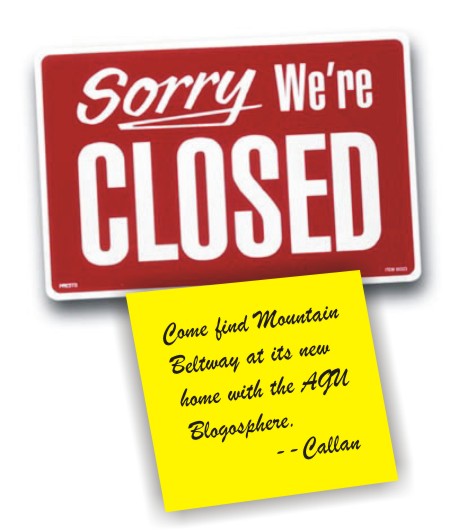
For the twenty-fourth edition of the Accretionary Wedge, I selected “heroes” as the theme. For those of you new to the geoblogosphere, the Accretionary Wedge is a ~monthly geoblog “carnival,” wherein various and sundry geobloggers write posts on a common theme.
Broadly speaking, submissions to this edition fell into three categories: (1) professional heroes, (2) personal heroes, and (3) individuals who were both professional and personal heroes.
The ‘pros’:
Neil of Microecos was the first one to submit a tribute to three women paleontologists: Mary Anning, Annie Alexander, and Tilly Edinger. The three profiles he offers show conclusively that not all fossilists are old white men.
Ian Stimson of Hypo-theses also chose a woman as his hero: the woman who discovered in the inner core, Inge Lehmann. She made on of the most fundamental interpretations of the structure of our planet, using Ian’s favorite medium, seismic waveforms.
Above the core is the mantle, and plate tectonic theory suggested in the 1960s that the mantle might move around, dragging around lithospheric plates above. Chris Rowan of Highly Allochthonous reminds us that Arthur Holmes suggested something very similar in 1928. Chris explores Holmes’ ideas, style, and influence on geologic thinking at a critical time.
When the mantle partially melts, it makes basaltic magma. One spot where that liquid rock makes it to the surface is Hawaii, where Thomas Jaggar worked. Jess (a.k.a. ‘Tuff Cookie’) of the blog Magma Cum Laude says that the reason she finds Jaggar heroic is that he studied volcanoes in service to mankind. Jaggar valued the practical application of his ideas towards protecting people’s lives.
Chris M of Pools and Riffles wrote a post about one of his professional heroes, the pioneering fluvial geomorphologist Luna Leopold. Chris’s post dovetails nicely with a piece by Anne of Highly Allochthonous about Leopold’s collaborator Reds Wolman (see the “both” category below).
John Van Hoesen came out of the blogging deep-freeze with his thoughtful post about Louis Agassiz over at his rejuvenated blog Geological Musings in the Taconic Mountains. Agassiz, of course, is the reason that today we all think that the Pleistocene was a time of massive continental glaciation in the northern hemisphere. John’s understanding of his hometown is an Agassiz legacy.
Another John, this one the author of Karmasotra, opted for yet another John, John Wesley Powell, as his hero. Blogger John profiles Explorer John with a short biography and a sense of profound respect at how willingly Powell immersed himself in the unknown.
Finally, David Bressan of Cryology and Co. wrote an essay that discusses an important group of professionals: those who make us laugh. He discusses caricaturists and cartoonists, especially those who critiqued Victorian geologic thought.
The personal heroes:
Mel of Ripples In Sand came out of blogging semi-retirement to heap accolades on the geologically-aware individuals who forecast avalanche risk for skiers in the Rocky Mountain West.
I was the last person to submit an entry to this Wedge, and that was my tribute earlier today to Larry Wiseman, developmental biologist, artist, scholar, mentor, and connoisseur of life. His influence was instrumental in giving me my interests, enthusiasms, and priorities.
Larry was the one to put me onto the works of the author and philosopher (he hated being called a “nature writer”) Edward Abbey, and Abbey also happens to be the hero of Garry Hayes, a.k.a. Geotripper. Garry explores Abbey’s influential thinking and gorgeous prose, and relates it to issues like overpopulation and the climate crisis.
The “both” heroes:
Thinking along the same lines of Chris M (above), Anne Jefferson of Highly Allochthonous led the pack with a tribute to the fluvial geomorphologist Reds Wolman, who recently passed away. Reds taught Anne at Johns Hopkins when she was an undergraduate, and then she took up her doctoral study under an earlier Wolman PhD student, Gordon Grant, which meant that Reds became her “academic grandfather.” Anne’s tribute was penned before the Wedge was announced, but she followed up later with a supplementary tribute, including video of her hero.
‘Pascal,’ the author of Research at a Snail’s Pace, couldn’t choose a single hero, but some were clearly professional (Robert Bakker and Stephen Jay Gould) and others were clearly personal (parents and wife). See his many positive influences here.
Likewise, ‘Silver Fox’ of Looking for Detachment couldn’t pick just one, so she shared a collection of vignettes about why she finds Tanya Atwater and Tom Dibblee heroic, as well as her many advisors and mentors through life and geologic training.
Though the Sandglass‘s Michael Welland has both a professional and personal connection to his hero, thesis advisor Alan Smith. Michael relates the story of a day in the field, and how a thoughtful question from Alan revolutionized his thinking about field work.
Bill Normark was a marine geologist who produced work that was influential on the thinking of Brian Romans, author of Clastic Detritus. Brian describes how Bill’s work came off the printed page and into his life when Bill served on Brian’s PhD committee, and stimulated his interest in integrating modern sedimentation with the ancient sedimentological record. Apparently, he also made some tasty wine!
Some wine seems to be called for here: reviewing this stellar list of extraordinary individuals, I feel compelled to (virtually) pour each of you glass. Let’s raise this virtual wine aloft with a toast to these men and women who influenced our lives, our thinking, our science, and our goals.
May our heroes’ memories inspire us; may their legacies inspire others!
Long live the heroes; Cheers, everyone!
* < much clinking of glasses, shouts and huzzahs > *
Filed under: blogs, geology | 6 Comments »








